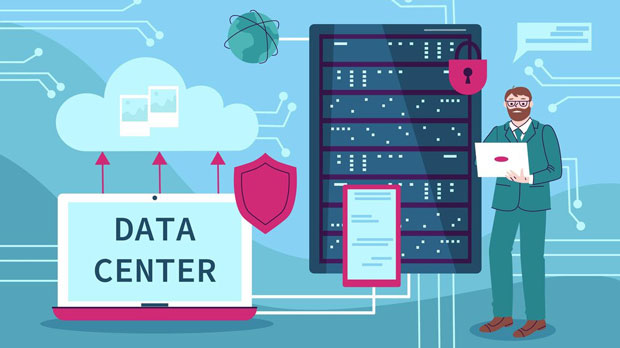Open source proxy servers have become a pivotal component in modern IT infrastructures, offering advantages like cost-effectiveness, flexibility, and the ability to customize. However, ensuring the security, performance, and reliability of these proxy servers requires effective log management and monitoring. Logs capture detailed information about the proxy's activities, making it essential to manage and analyze them for various purposes such as troubleshooting, performance optimization, and security auditing. In this article, we will explore the key log management and monitoring solutions available for open-source proxy servers, discussing both the tools and practices that help system administrators achieve robust server monitoring and proactive issue resolution. Importance of Log Management and MonitoringLog management and monitoring are essential for maintaining the health and performance of any proxy server. The logs generated by proxy servers contain vital data that can be used to:1. Troubleshoot issues: Logs help identify when and why a problem occurred, whether it's network failure, incorrect configurations, or software bugs.2. Enhance security: By reviewing proxy logs, administrators can detect suspicious activities, such as unauthorized access attempts or unusual traffic patterns, which could indicate a security breach.3. Optimize performance: Logs can reveal bottlenecks or suboptimal configurations affecting server speed, allowing administrators to make necessary adjustments.4. Ensure compliance: In many industries, regulatory requirements dictate that organizations track and retain logs for specific periods. Proper log management ensures compliance with these regulations.Key Components of an Effective Log Management SystemAn effective log management and monitoring system for open-source proxy servers needs to consist of several components that work together seamlessly:1. Centralized Log Collection: Proxy servers typically generate large volumes of log data, and centralizing these logs in a single location makes it easier to manage and analyze them. Tools like Logstash (part of the Elastic Stack) or Fluentd can be used to aggregate logs from multiple sources, standardize their format, and forward them to a central storage location.2. Log Storage: After the logs are collected, they need to be stored in a scalable and easily accessible way. Open-source tools such as Elasticsearch or Apache Kafka can be employed to store logs for analysis and querying. These tools allow for high-speed storage, efficient querying, and scalability.3. Log Parsing and Filtering: Once the logs are collected, it's essential to parse and filter the data to extract useful insights. Proxy logs often contain a lot of redundant or irrelevant data. Filebeat, part of the Elastic Stack, or custom scripts can be used to parse log files and filter out unnecessary data, leaving only the relevant information for monitoring.Popular Open Source Proxy Server Log Management ToolsSeveral open-source tools are available for managing and monitoring proxy server logs. These tools vary in terms of features, but they all share a focus on enhancing the visibility and security of proxy server activity.1. Elastic Stack (ELK Stack): The Elastic Stack, also known as the ELK Stack (Elasticsearch, Logstash, and Kibana), is one of the most widely used open-source solutions for log management and monitoring. Elasticsearch provides scalable and fast search capabilities, while Logstash acts as a log collector and parser. Kibana offers a powerful visualization platform, allowing administrators to create dashboards and monitor logs in real-time. This stack provides a comprehensive solution for collecting, parsing, storing, and visualizing proxy server logs. It allows administrators to quickly identify performance issues, potential security threats, and network anomalies.2. Prometheus and Grafana: Prometheus is a monitoring tool that collects and stores time-series data, making it ideal for tracking the performance of proxy servers over time. It supports querying, alerting, and visualization of metrics. Paired with Grafana, an open-source platform for visualizing data, it can offer real-time dashboards for monitoring the health and performance of proxy servers. While Prometheus focuses on metrics (e.g., latency, error rates, request counts), Grafana allows you to visualize this data in interactive and informative ways, making it easier to spot trends or anomalies.3. Graylog: Graylog is another open-source log management tool that focuses on providing centralized log management and analysis. It allows for log collection, parsing, and searching, making it easier for administrators to monitor and troubleshoot proxy servers. Graylog supports real-time analysis and provides powerful search and alerting features. One key benefit of Graylog is its scalability, which makes it well-suited for managing logs in large environments with high volumes of proxy server data.Best Practices for Proxy Server Log ManagementTo maximize the effectiveness of log management and monitoring, it's important to follow best practices. These practices will help ensure that logs are collected, stored, and analyzed in the most efficient and secure manner.1. Define Log Retention Policies: It’s crucial to establish clear retention policies that determine how long logs are kept and when they should be archived or deleted. Depending on the type of organization and the industry, regulatory requirements may dictate specific retention periods. Retaining logs for longer than necessary can lead to storage issues, while deleting them too soon can result in losing valuable data for troubleshooting or security audits.2. Ensure Log Integrity and Security: Logs can provide sensitive information, so it's important to protect their integrity. Use encryption to secure logs in transit and at rest. Additionally, access control should be implemented to ensure that only authorized personnel can access and analyze logs. This prevents unauthorized tampering or viewing of logs.3. Set Up Alerts and Notifications: Real-time alerts and notifications are critical for detecting issues or security breaches promptly. By setting up alerts based on specific conditions (e.g., high error rates, unauthorized access attempts), administrators can take immediate action to mitigate any risks.4. Regularly Review and Analyze Logs: Logs should be regularly reviewed to identify potential issues before they escalate. Automated log analysis tools can assist in identifying trends, errors, and security incidents. Additionally, administrators should perform periodic manual reviews to ensure no important details are overlooked.Open-source proxy server log management and monitoring are essential for maintaining optimal performance, security, and compliance. By utilizing open-source tools like the Elastic Stack, Prometheus, Grafana, and Graylog, administrators can efficiently collect, store, and analyze proxy logs, enabling them to detect problems early, ensure a secure network environment, and comply with regulatory requirements. Implementing best practices for log retention, security, alerting, and analysis will help organizations make the most of their open-source proxy server infrastructure and provide better service to their users.
Jun 05, 2025





















































